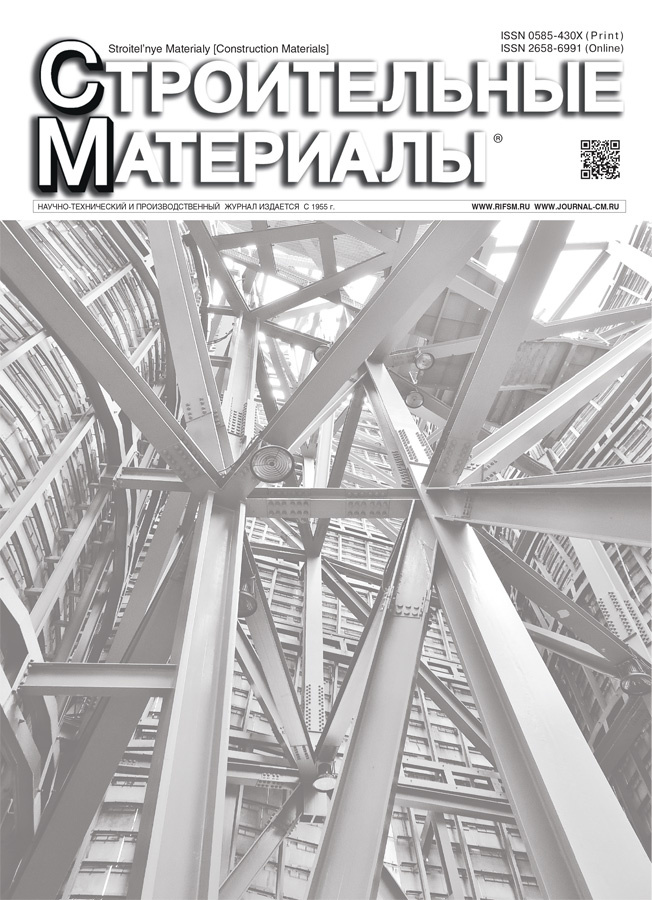Mudstones based black clinker ceramic brick
- Авторлар: Yashchenko R.A.1, Kotlyar V.D.1, Lapunova K.A.1, Orlova M.E.1
-
Мекемелер:
- Don State Technical University
- Шығарылым: № 9 (2025)
- Беттер: 39-46
- Бөлім: Статьи
- URL: https://snv63.ru/0585-430X/article/view/693104
- DOI: https://doi.org/10.31659/0585-430X-2025-839-9-39-46
- ID: 693104
Дәйексөз келтіру
Аннотация
Ceramic bricks have high strength, durability, aesthetic appeal and are one of the most sought-after building materials. Presently dark-colored cladding materials are becoming increasingly popular in the construction industry. Black color of the brick gives the architecture expressiveness: depth, graphic and brutality. It emphasizes the shapes sculptural plasticity, reveals the structures tectonics and creates strong visual contrasting accents. During the research black ceramic stones based on domestic raw materials were obtained with the tanning of color-enhancing components, and their physical and mechanical properties and visual characteristics were studied. It is found that mudstones, which are widespread in Russia, can be used as a promising raw material for the production of black clinker bricks. Based on this raw material with manganese oxide and a color enhancer addition it is possible to obtain a high-strength ceramic stone with specified physico-mechanical and aesthetic characteristics.
Негізгі сөздер
Толық мәтін
Авторлар туралы
R. Yashchenko
Don State Technical University
Хат алмасуға жауапты Автор.
Email: roma.8929@mail.ru
Engineer
Ресей, 1, Gagarin Square, Rostov-on-Don, 344003V. Kotlyar
Don State Technical University
Email: diatomit_kvd@mail.ru
Doctor of Sciences (Engineering)
Ресей, 1, Gagarin Square, Rostov-on-Don, 344003K. Lapunova
Don State Technical University
Email: keramik_kira@mail.ru
Candidate of Sciences (Engineering)
Ресей, 1, Gagarin Square, Rostov-on-Don, 344003M. Orlova
Don State Technical University
Email: marina.nekrasova.96@list.ru
Candidate of Sciences (Engineering)
Ресей, 1, Gagarin Square, Rostov-on-Don, 344003Әдебиет тізімі
- Devos K., Devlieger L., Steeman M. Reclaimed or new? Life cycle assessment of ceramic bricks. Journal of Cleaner Production. 2024. Vol. 476. 143764. https://doi.org/10.1016/j.jclepro.2024.143764
- Geilson Márcio Albuquerque de Vasconcelos, Tiago Ancelmo de Carvalho Pires, Jose Jéferson Rêgo Silva Structural and fire performance of masonry walls with ceramic bricks. Engineering Structures. 2023. Vol. 291. 116399. https://doi.org/10.1016/j.engstruct.2023.116399
- Cajamarca-Zuniga D., Kabantsev O.V., Campos D. Geometric characterization of solid ceramic bricks for construction in Ecuador. Structural Mechanics of Engineering Constructions and Buildings. 2023. Vol. 19. No. 3, pp. 329–336. EDN: RCYIGM. https://doi.org/10.22363/1815-5235-2023-19-3-329-336
- Baranova S.I. Problems of studying brick production in Eastern Europe and Siberia. Vestnik of Tomsk State University. 2024. No. 508, pp. 152–159. (In Russian).EDN: HUYZOV. https://doi.org/10.17223/15617793/508/16
- Kardash O.V., Girchenko E.A., Tanykova N.G., Petrova Yu.Yu., Ermakova K.K. New data on the chemical-technological analysis of ceramics of the Li people of Hainan Island: on the problem of preserving pottery traditions. Problemy Arkheologii, Etnografii, Antropologii Sibiri i Sopredel’nykh Territoriy. 2023. Vol. 29, pp. 638–646. (In Russian). EDN: THYPYY. https://doi.org/10.17746/2658-6193.2023.29.0638-0646
- Chudova T.I. Features of the production of clay pottery in the Komi (Zyryan) culture in the late 19th – first half of the 20th century. Bulletin of Archeology, Anthropology and Ethnography. 2019. No. 1 (44), pp 89–97. (In Russian).EDN: ZBJDFJ. https://doi.org/10.20874/2071-0437-2019-44-1-089-097
- Bozhko Yu.A., Lapunova K.A. About the development of brick-design in Russia. Stroitel’nye Materialy [Construction Materials]. 2020. No. 12, pp. 21–24. (In Russian). EDN: GGQGIR. https://doi.org/10.31659/0585-430X-2020-787-12-21-24
- Kotlyar V.D., Nebezhko N.I., Terekhina Yu.V., Popov Yu.V., Nebezhko Yu.I., Yashchenko R.A. Features of black clinker brick production. Stroitel’nye Materialy [Construction Materials]. 2020. No. 4–5, pp. 97–102. (In Russian). EDN: LJZYNB. https://doi.org/10.31659/0585-430X-2020-780-4-5-97-102
- Tatskiy L.N., Ilyina L.V. Development of charge compositions from low-quality clay raw materials in the technology of volumetric coloring wall ceramics. Izvestiya of Higher Educational Institutions. Construction. 2020. No. 1 (733), pp. 87–101. (In Russian). EDN: PCBRMQ. https://doi.org/10.32683/0536-1052-2020-733-1-87-101
- Shevando V.V., Abdrakhimov A.V., Vdovina E.V., Abdrakhimova E.S., Abdrakhimov V.Z. The influence of ash and slag material on the properties of bricks. Ekologiya i Promyshlennost’ Rossii. 2009. No. 3, pp. 30–32. (In Russian).EDN: KTOMZT
- Levitsky I.A., Khoruzhik O.N. The relationship between the properties, phase composition and microstructure of clinker bricks. Steklo I Keramika. 2021. No. 5, pp. 26–33. (In Russian). EDN: ZRWGXW
- Stolboushkin A.Yu., Fomina O.A., Akst D.V., Ivanov A.I., Druzhinin M.S. Production of decorative wall ceramics from clay raw materials and manganese ore mining waste. Stroitel’nye Materialy [Construction Materials]. 2016. No. 12, pp. 38–44. (In Russian). EDN: XHFQDP. https://doi.org/10.31659/0585-430X-2016-744-12
- Kondratenko V.A. Keramicheskiye stenovyye materialy: optimizatsiya ikh fiziko-tekhnicheskikh svoystv i tekhnologicheskikh parametrov proizvodstva [Ceramic wall materials: optimization of their physical and technical properties and production process parameters]. Moscow: Kompozit. 2005. 509 p.
- Kotlyar V.D., Terekhina Yu.V., Kotlyar A.V. Testing methods for stone-like raw materials for the production of compression-molded wall products. Stroitel’nye Materialy [Construction Materials]. 2014. No. 4, pp. 24–27. (In Russian).EDN: SAJLER
Қосымша файлдар

















